 ‘Salem’s Lot–a perennial favorite that we’ve discussed a few times before–was published in 1975, and was quickly hailed as ‘Peyton Place meets Dracula’, a commentary on the rich characterization, the constant and careful attention to setting and detail, and the gradually growing sense of horror and menace that overtakes this otherwise familiar setting. The novel is an exceptionally current one (King says in the introduction to a later edition that he was always much more a writer of the moment than he wanted to be), with references to the Vietnam War, drugs, the ‘counter-culture’, as well as fashion and social behaviors of the day.
‘Salem’s Lot–a perennial favorite that we’ve discussed a few times before–was published in 1975, and was quickly hailed as ‘Peyton Place meets Dracula’, a commentary on the rich characterization, the constant and careful attention to setting and detail, and the gradually growing sense of horror and menace that overtakes this otherwise familiar setting. The novel is an exceptionally current one (King says in the introduction to a later edition that he was always much more a writer of the moment than he wanted to be), with references to the Vietnam War, drugs, the ‘counter-culture’, as well as fashion and social behaviors of the day.
Nevertheless, it was something of a surprise to realize that the film was made only three years later, originally airing on CBS in November of 1979. It starred David Soul as Ben Mears…yes, the same David Soul who had just finished playing Hutch in Starsky and Hutch. One can only assume that this is why he got the part, because Soul looking nothing like the Ben Mears of the books (who resembles King himself, actually). While things like this were probably jarring to readers (as is the California sets, full of flat-roofed buildings and big, sprawling hills), overall the production was well-received, earning three Primetime Emmy Award nominations for makeup, music, and graphic design.
 In many ways, the film has also withstood the test of time…the pace is a little uneven, but the parts that are supposed to be scary still pack plenty of punch. Part of this has to do with the ever-popular jump-scares and musical stings, but there was a good amount of consideration put into making each scenes effective and atmospheric. Instead of using wires, for example, to keep the vampires airborne, the production staff places the actors on boom cranes, and shot in reverse, so that their movements look as odd as possible. A simple trick, perhaps, but an effective one. And there is very little that can prepare a viewer for their first (and second, and third) sight of Barlow, the Big Bad of this story.
In many ways, the film has also withstood the test of time…the pace is a little uneven, but the parts that are supposed to be scary still pack plenty of punch. Part of this has to do with the ever-popular jump-scares and musical stings, but there was a good amount of consideration put into making each scenes effective and atmospheric. Instead of using wires, for example, to keep the vampires airborne, the production staff places the actors on boom cranes, and shot in reverse, so that their movements look as odd as possible. A simple trick, perhaps, but an effective one. And there is very little that can prepare a viewer for their first (and second, and third) sight of Barlow, the Big Bad of this story.
This Barlow is not the oily, suave vampire of the Bela Lugosi era, or the tuxedo-ed and seductive vampires that even in the ’70’s were fairly recognizable. Instead, producer Richard Kobritz explained, “We went back to the old German Nosferatu concept where he is the essence of evil, and not anything romantic or smarmy…I wanted nothing suave or sexual, because I just didn’t think it’d work; we’ve seen too much of it.” Thus, in this movie, you get a thing out of nightmare: Austrian actor Reggie Nalder as Barlow in monstrous fangs and grotesquely long nails, with glowing yellow eyes (that he could apparently only wear for 15 minute stretches) and a horrible, grating growl. While this may directly fly in the face of King’s conception of Barlow as a human (or humanoid?) force of evil, in purely aesthetic terms, Nalder’s vampire is much more likely to induce nightmares.
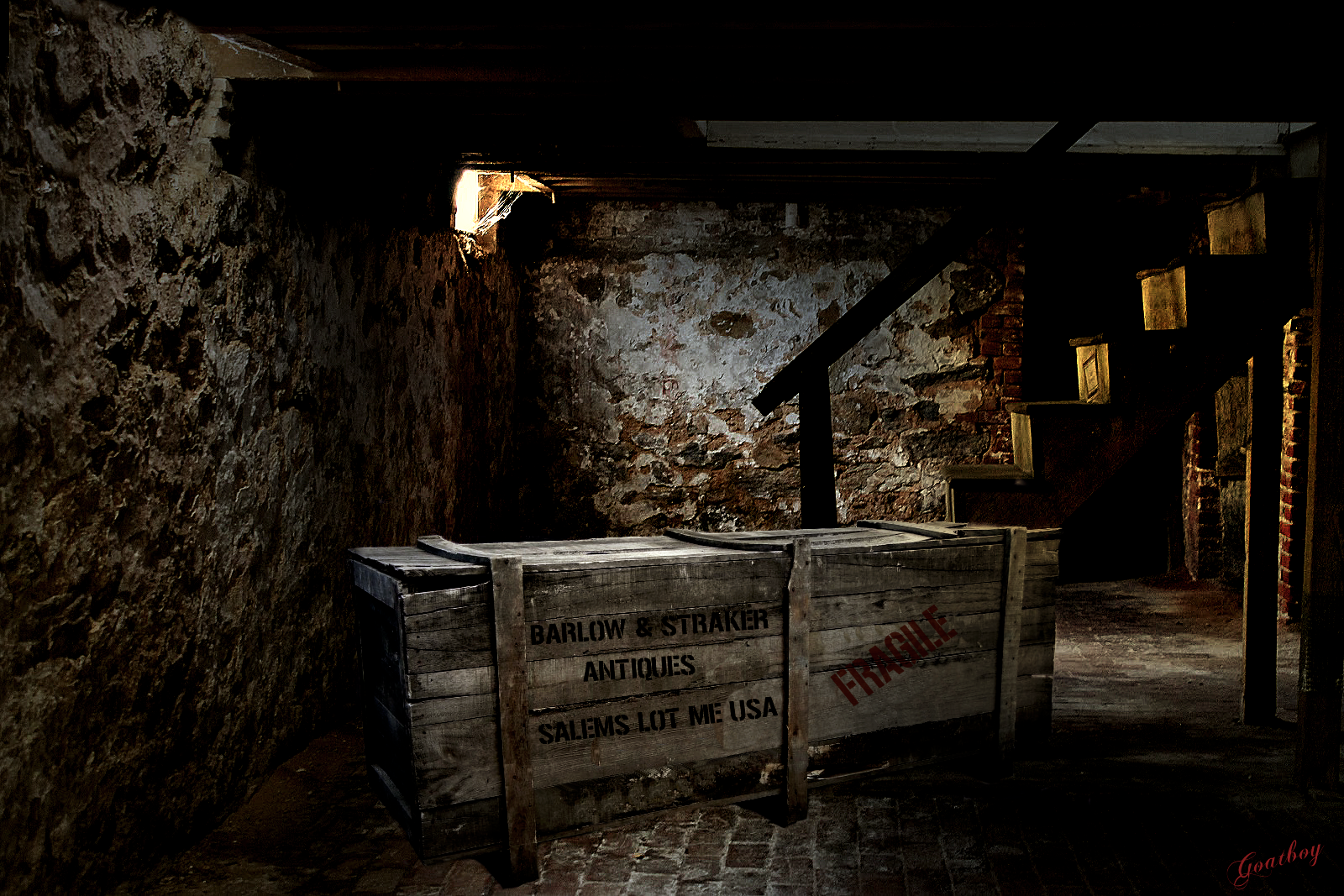
Watching this film also drives home how progressive King’s book was. The Susan Norton of the book is mature, generally sensible, and pretty straightforward about wanting an equitable and respectful relationship. The Susan of the film (played by Bonnie Bedelia, later of Parenthood and Die Hard fame) is self-deprecating, 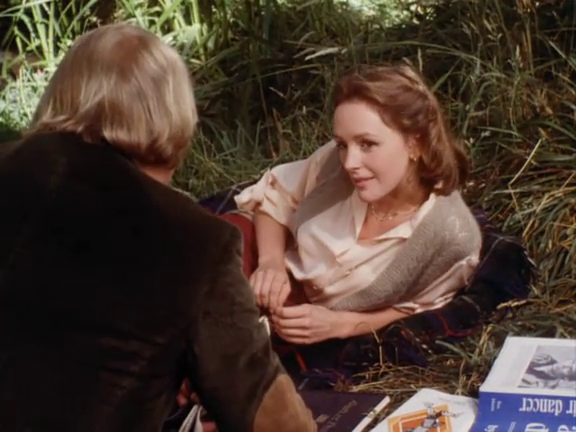 generally silent, and nearly passive from start to finish…not to mention the fact that the two heroes of this version of the story are Ben, her boyfriend, and her father, making her a weird sort of prize for the two of them, rather than a partner in the vampire-hunting. In the end, it turns out the film was much more a piece of “the moment” in a way King’s book would never be.
generally silent, and nearly passive from start to finish…not to mention the fact that the two heroes of this version of the story are Ben, her boyfriend, and her father, making her a weird sort of prize for the two of them, rather than a partner in the vampire-hunting. In the end, it turns out the film was much more a piece of “the moment” in a way King’s book would never be.
All in all, though, this is definitely a fun and effective Halloween movie that is worth viewing…and for those of you looking for even more blood-curdling films for this Halloween, take a look at these titles:
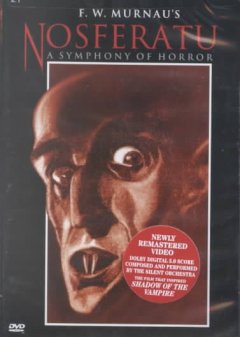 Nosferatu: The first vampire film is still among the best vampire films. F.W. Murnau’s silent classic was a blatant rip-off of Bram Stoker’s Dracula, which was still under copyright in 1922. Stoker’s widow, Florence, sued to have all the copies of the film destroyed, but lucky for all of us, some survived. Watch this with any number of film scores that can be found online for a perfect vintage Halloween.
Nosferatu: The first vampire film is still among the best vampire films. F.W. Murnau’s silent classic was a blatant rip-off of Bram Stoker’s Dracula, which was still under copyright in 1922. Stoker’s widow, Florence, sued to have all the copies of the film destroyed, but lucky for all of us, some survived. Watch this with any number of film scores that can be found online for a perfect vintage Halloween.
 Shadow of the Vampire: Anyone who enjoys Nosferatu will get a kick out of E. Elias Merhige’s (fictional) film about the making of the movie…and the revelation that Max Schrenk, who played the titular villain, was a real-life vampire himself. Though there are some laughs sprinkled throughout this film, John Malkovich does such a chilling, pitch-perfect impression of Schrenk that it’s hard not to get a case of the shivers while watching him.
Shadow of the Vampire: Anyone who enjoys Nosferatu will get a kick out of E. Elias Merhige’s (fictional) film about the making of the movie…and the revelation that Max Schrenk, who played the titular villain, was a real-life vampire himself. Though there are some laughs sprinkled throughout this film, John Malkovich does such a chilling, pitch-perfect impression of Schrenk that it’s hard not to get a case of the shivers while watching him.
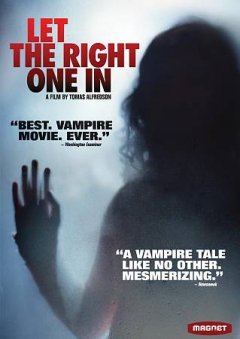 Let The Right One In: The inspiration for this film, John Ajvide Lindqvist’s Let Me In, is arguably one of the best vampire novels of the past decade, and he also wrote the screenplay for this beautiful and subtly horrifying film version. Like King’s novel, Lindqvist turns the vampire myth on its head by showing the most innocent, innocuous members of society as the ultimate threat–in this case, a young girl whose power…and hunger…are as compelling as they are terrible. Like King, too, this novel is also deeply concerned with the evil and violence that men can do, outside of the threat of the paranormal.
Let The Right One In: The inspiration for this film, John Ajvide Lindqvist’s Let Me In, is arguably one of the best vampire novels of the past decade, and he also wrote the screenplay for this beautiful and subtly horrifying film version. Like King’s novel, Lindqvist turns the vampire myth on its head by showing the most innocent, innocuous members of society as the ultimate threat–in this case, a young girl whose power…and hunger…are as compelling as they are terrible. Like King, too, this novel is also deeply concerned with the evil and violence that men can do, outside of the threat of the paranormal.
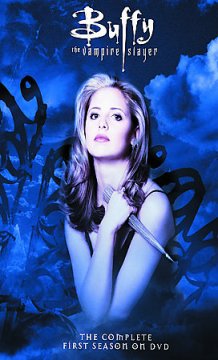 Buffy the Vampire Slayer: Though arguably the least scary addition to this list, Joss Wheadon was heavily influenced by watching the film of Salem’s Lot, and has cited it several times as his inspiration, both for the little-known film, and for the later series. The show aired for seven seasons, and had an enormous influence, both over its viewers, and in how it changed the way that TV dramas were made, responding as much to issues of the moment as it built a world of its own.
Buffy the Vampire Slayer: Though arguably the least scary addition to this list, Joss Wheadon was heavily influenced by watching the film of Salem’s Lot, and has cited it several times as his inspiration, both for the little-known film, and for the later series. The show aired for seven seasons, and had an enormous influence, both over its viewers, and in how it changed the way that TV dramas were made, responding as much to issues of the moment as it built a world of its own.
